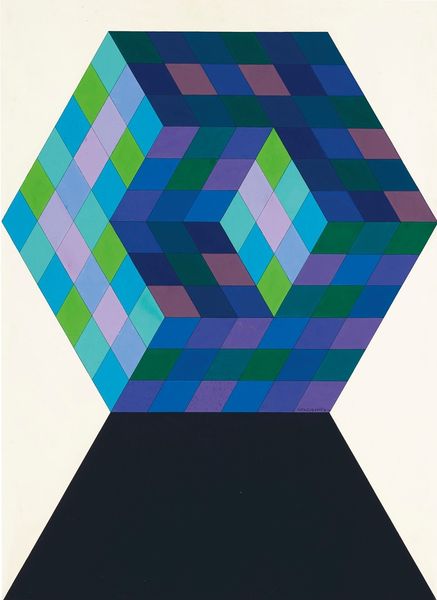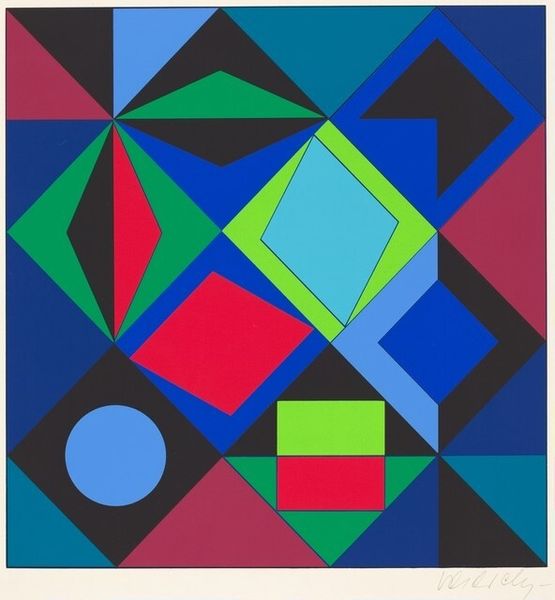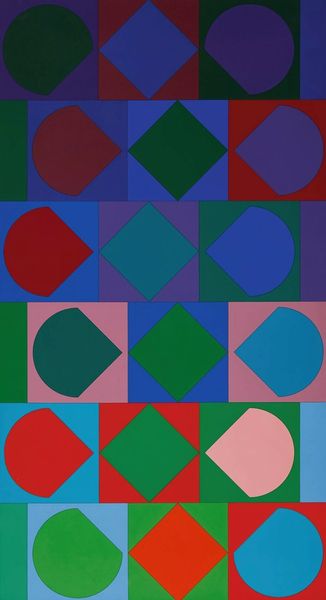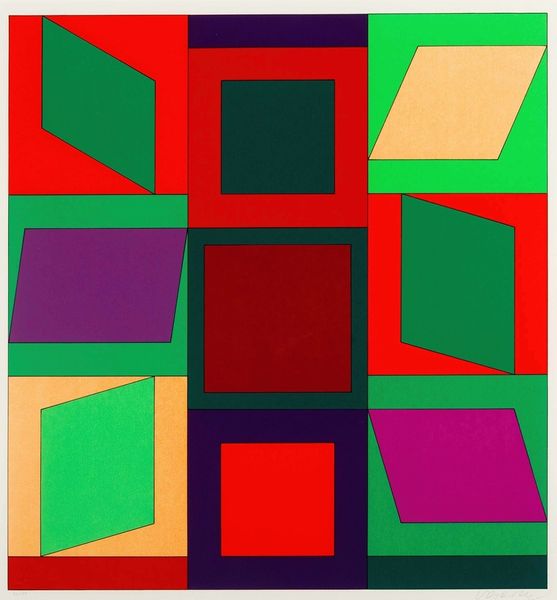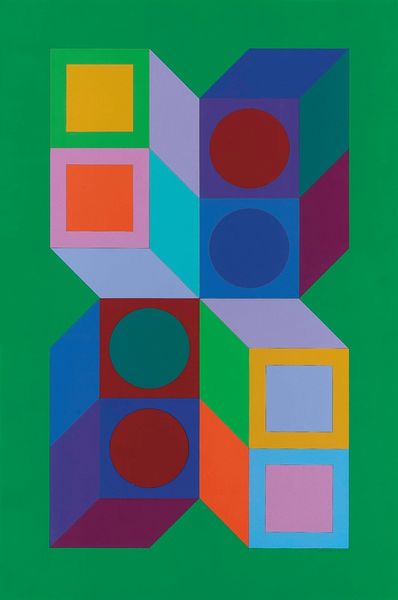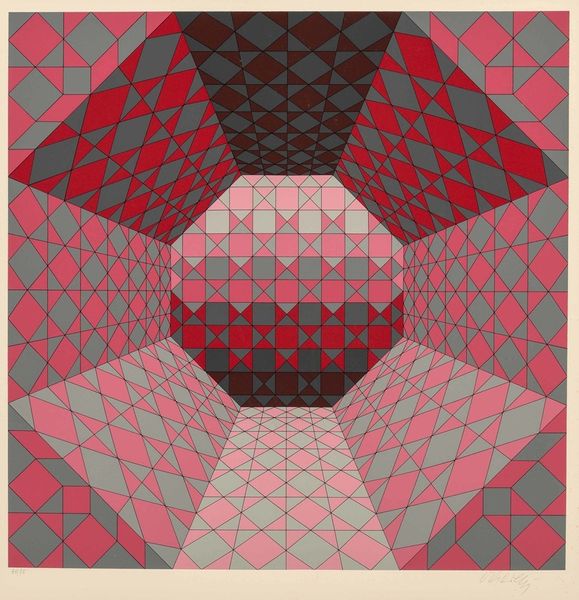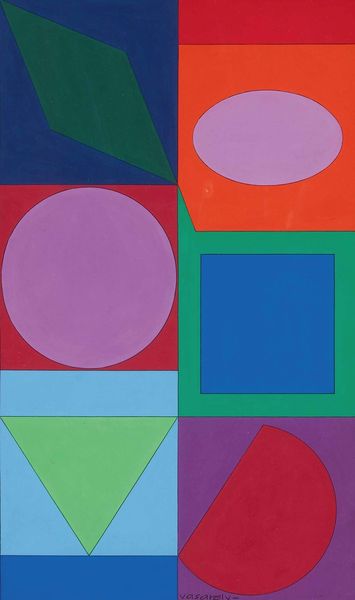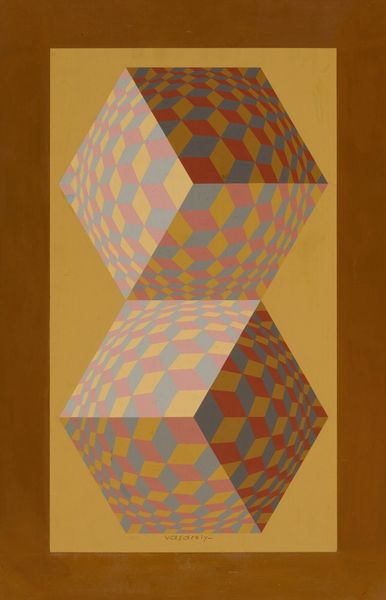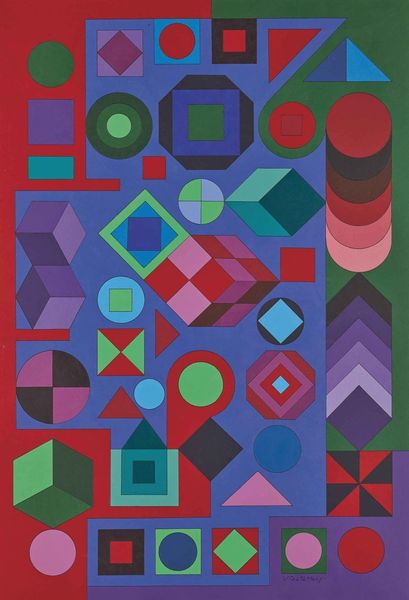
acrylic-paint
#
op-art
#
pop art
#
acrylic-paint
#
abstract
#
form
#
geometric pattern
#
geometric
#
geometric-abstraction
#
abstraction
#
pop-art
#
line
Copyright: Modern Artists: Artvee
Editor: This is Victor Vasarely's "Tridim-M" from 1968, created with acrylic paint. I am immediately struck by its boldness; the way the geometric shapes seem to pop off the canvas, almost like a constructed object. What can you tell me about the material processes that may have influenced Vasarely's work? Curator: Let's think about what was happening in the art world, and the broader world of manufacturing, at this time. The rise of plastics and new industrial paints provided artists like Vasarely with novel materials. How do you think the advent of acrylics, with their quick-drying and vibrant color properties, might have impacted his artistic process, or his exploration of visual perception? Editor: That's interesting. It makes me wonder if the uniformity of the colors and lines are only achievable through using these kinds of manufactured goods, suggesting a detachment from older traditions of painting. Do you think the "optical" effect relates to a certain attitude toward mass production and maybe the burgeoning computer age? Curator: Exactly. Consider the silk-screen techniques Vasarely employed. These techniques blur the line between fine art and industrial production. The crisp lines and bold colors, precisely applied with synthetic materials, weren't just about aesthetics; they were about democratizing art through replicability. How might that challenge traditional ideas of artistic skill and uniqueness? Editor: I see. If these works are reproducible then the labor is potentially devalued... But what do you make of the title? Curator: "Tridim" evokes a sense of three-dimensionality achieved through optical illusion. It speaks to the technological aspirations of the era, promising new dimensions made from these artificial means. Doesn't it also reflect the consumer culture, using art as a modular and marketable experience? Editor: That's a great insight. I hadn’t thought about how the materials and production methods can tell us so much about the intersection of art and broader societal changes. Thank you! Curator: My pleasure! Analyzing art this way helps us really appreciate what it communicates about a particular moment in history.
Comments
No comments
Be the first to comment and join the conversation on the ultimate creative platform.
